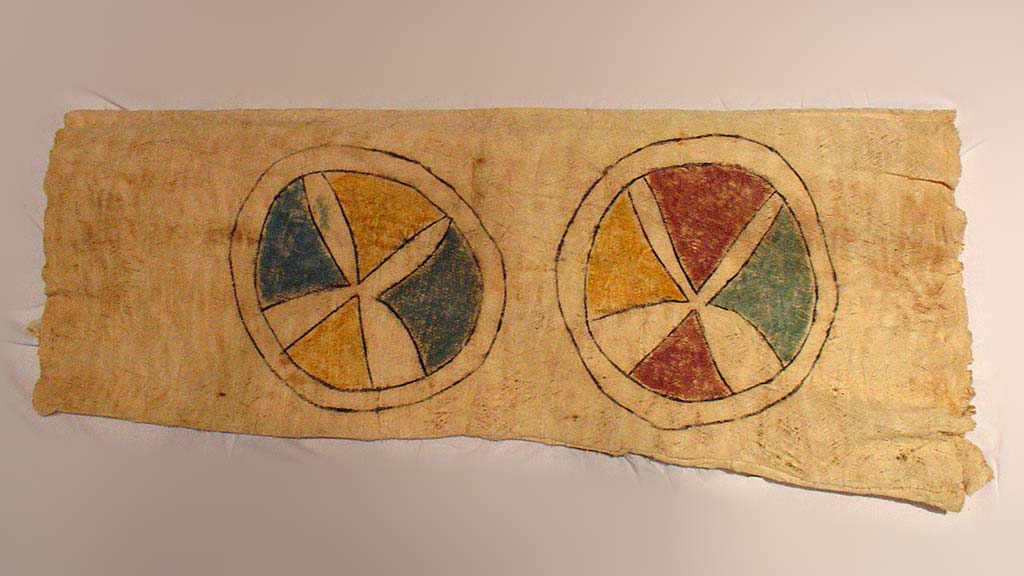
Tukuna Bark Cloth Collection from Southeastern Colombia
The Tukuna Bark Cloth collection consists of 225 cloth paintings, masks and costumes from the Tukuna region of Southeastern Colombia. Originally compiled in 1970 by graduate student Charles E. Bolian for the University's Department of Anthropology, this is one of the largest Tukuna cloth collections in the world.
-
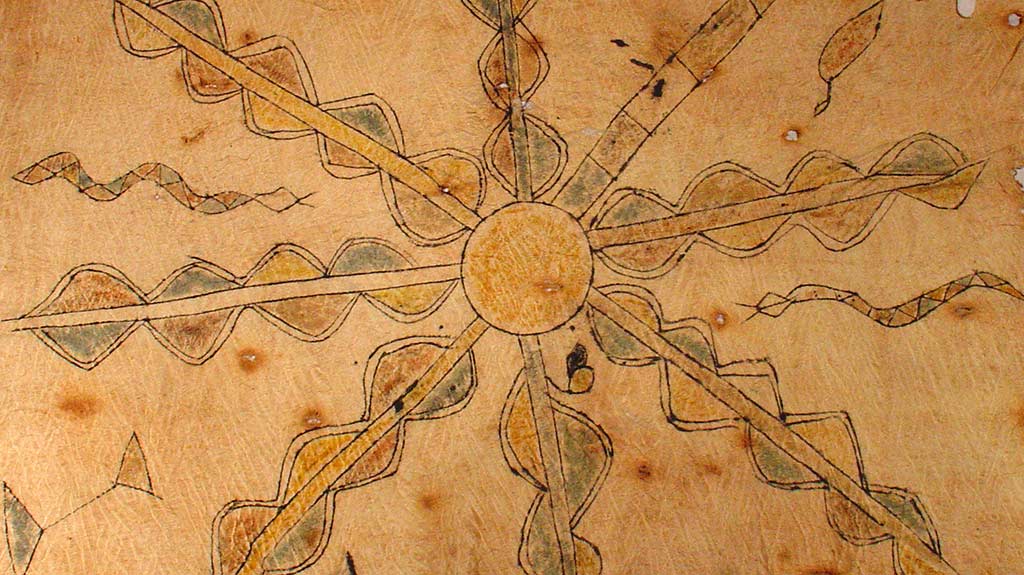 Bark Cloth Painting (2000.01.0816) Crosses are very popular designs in Tukuna art. This piece incorporates an eight-armed cross design, as well as boas and a bird. The dyes are both traditional vegetable dyes and battery carbon blacking. 2000.01.0816
Bark Cloth Painting (2000.01.0816) Crosses are very popular designs in Tukuna art. This piece incorporates an eight-armed cross design, as well as boas and a bird. The dyes are both traditional vegetable dyes and battery carbon blacking. 2000.01.0816 -
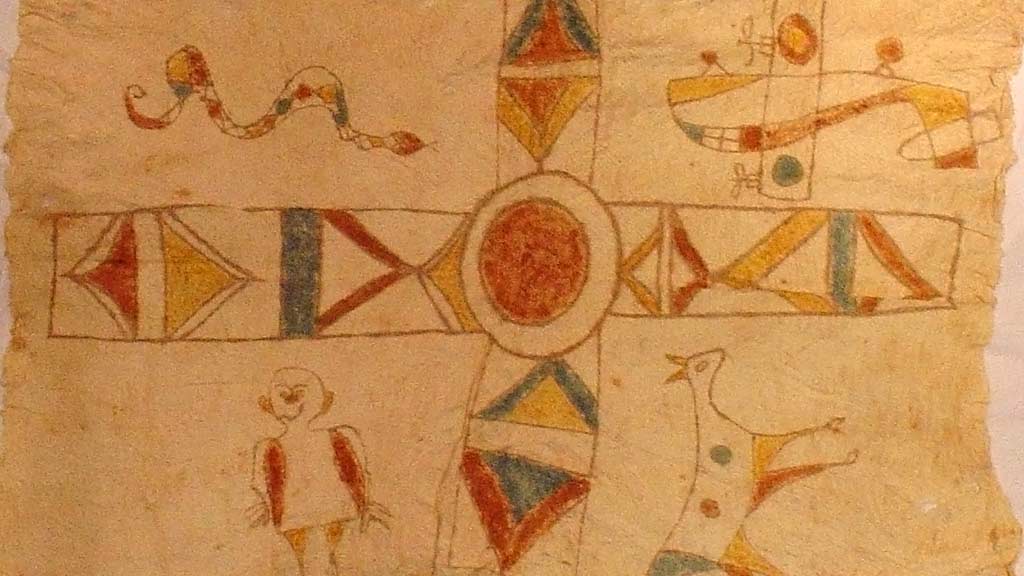 Bark Cloth Painting (2000.01.0838) The traditional cross design with geometric patterning divides the cloth into four quadrants containing a deer, man, boa, and airplane. 2000.01.0838
Bark Cloth Painting (2000.01.0838) The traditional cross design with geometric patterning divides the cloth into four quadrants containing a deer, man, boa, and airplane. 2000.01.0838
Obtaining the Collection
The Tukuna people first came to the attention of the University of Illinois Department of Anthropology through field work conducted by Dr. Donald W. Lathrap in the Ucayali Region of Peru in 1967. Charles E. Bolian then conducted field work in the Tukuna region of the Amazon Basin in 1970-1971. During that period, he received funding from the University to purchase bark cloth paintings, bark cloth costumes related to the girl's puberty ceremonies called Moca Nova or peleacon, and also other material culture items of the Tukuna.
This collection is one component of the Laboratory of Anthropology collections transferred to Spurlock in 2000.
Making Bark Cloth
Tukuna bark cloth is made by pounding together the inner layers of bark of the Sapucaia (Ficus) tree. The designs are painted with vegetable dyes, although sometimes the black pigment came from battery carbon. The textiles signify a connection between the Tukuna people, their enviroment, and the influence of outside peoples on that environment. Some of the paintings made for sale to tourists contain a mix of traditional and contemporary designs.
Notable Objects
-
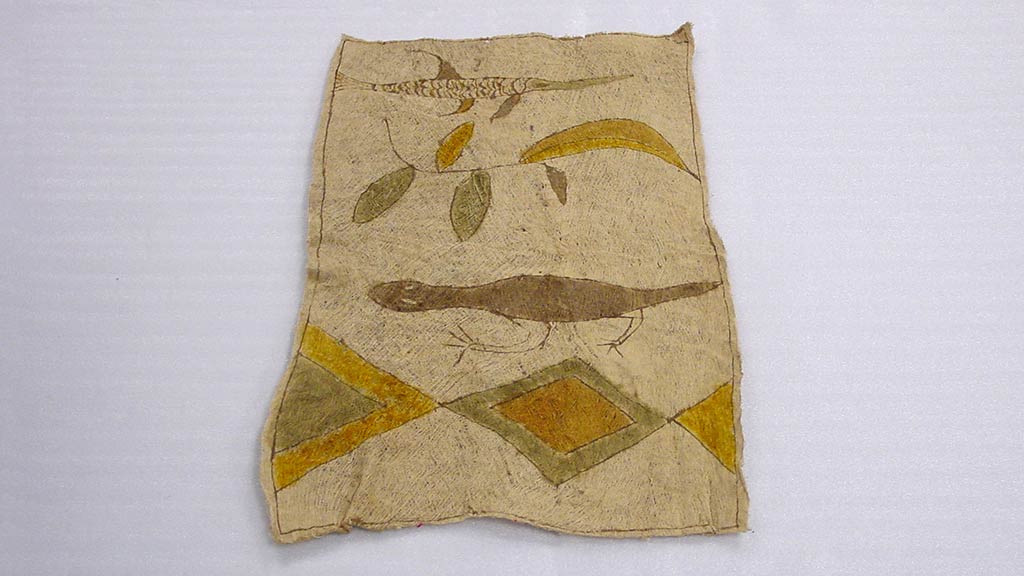 Bark Cloth Painting (2000.01.0663) The design of this cloth includes diamonds, leaves, and fish. 2000.01.0663
Bark Cloth Painting (2000.01.0663) The design of this cloth includes diamonds, leaves, and fish. 2000.01.0663 -
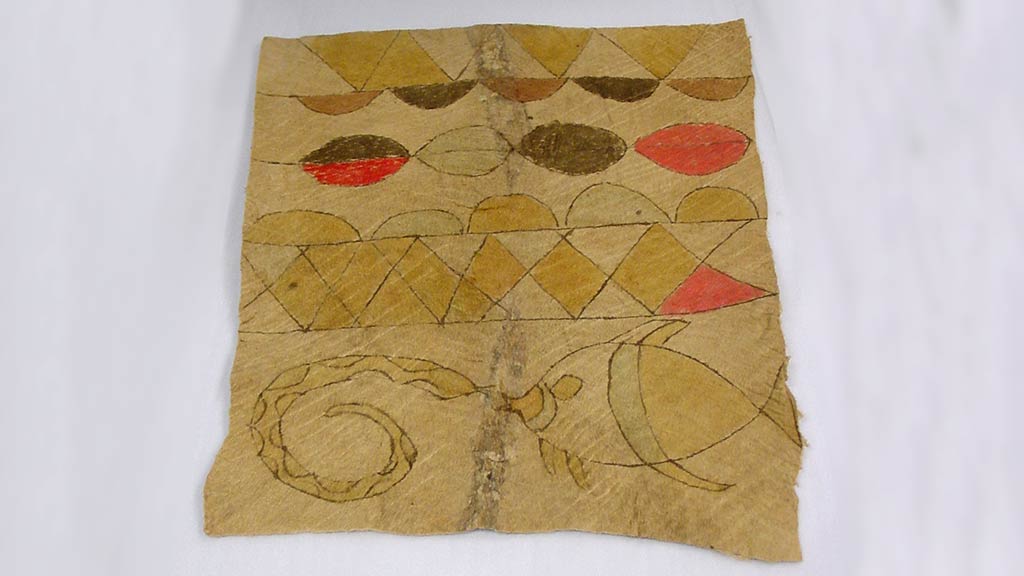 Bark Cloth Painting (2000.01.0665) Traditional geometric designs decorate this piece along with a boa constrictor and fish (probably gamitana, a freshwater fish). 2000.01.0665
Bark Cloth Painting (2000.01.0665) Traditional geometric designs decorate this piece along with a boa constrictor and fish (probably gamitana, a freshwater fish). 2000.01.0665 -
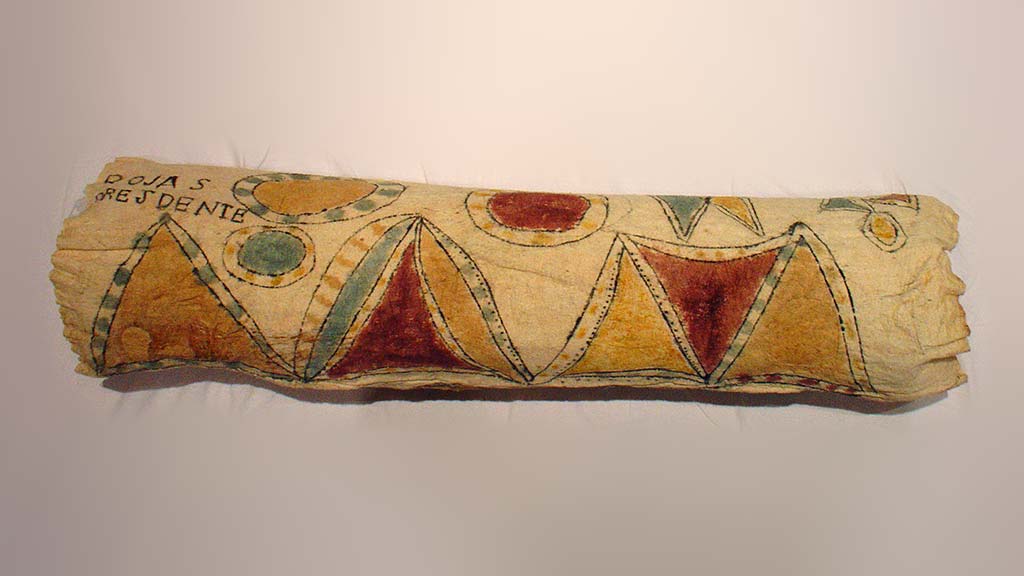 Bark Cloth Dress The designs include triangles, circles, dots, and trees, The phrase 'Rojas Presidents' appears on one side and may reference Gustavo Rojas Pinilla, a former military dictator who was running for president in the 1970s. 2000.01.0922
Bark Cloth Dress The designs include triangles, circles, dots, and trees, The phrase 'Rojas Presidents' appears on one side and may reference Gustavo Rojas Pinilla, a former military dictator who was running for president in the 1970s. 2000.01.0922 -
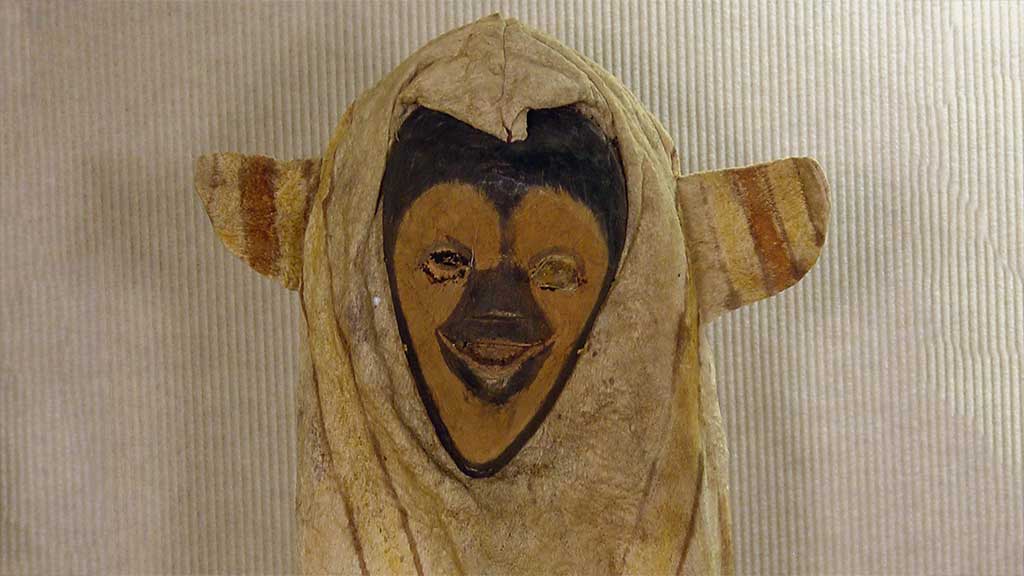 Bark Cloth Mask This Moca Nova mask shows the face of a monkey demon and may have been danced during the Dance of the Monkey. 2000.01.0157
Bark Cloth Mask This Moca Nova mask shows the face of a monkey demon and may have been danced during the Dance of the Monkey. 2000.01.0157 -
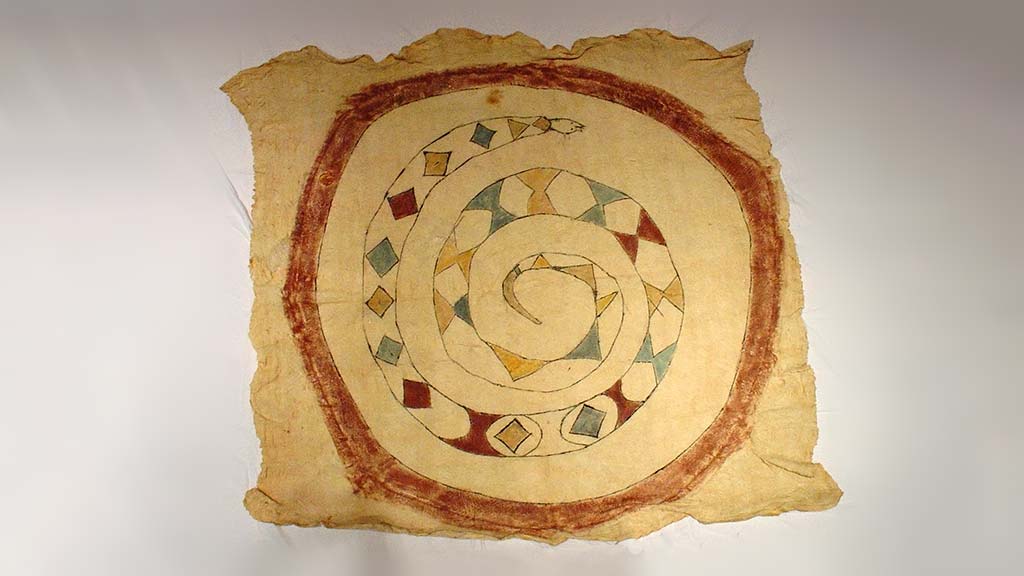 Bark Cloth for Shield The round band of purple outlined in black suggests that this Hoja menuda (a type of wild guava) piece is a intended for a ceremonial shield. A coiled anaconda fills the center of the shield. 2000.01.0925
Bark Cloth for Shield The round band of purple outlined in black suggests that this Hoja menuda (a type of wild guava) piece is a intended for a ceremonial shield. A coiled anaconda fills the center of the shield. 2000.01.0925 -
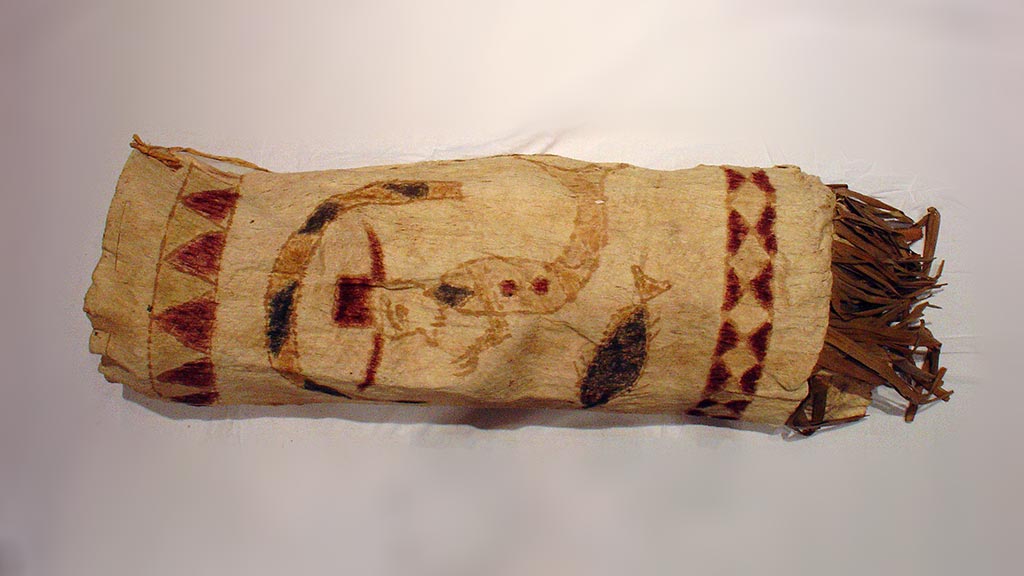 Bark Cloth Costume This costume was made for the girl's puberty ceremony. The patterning includes a geometric border, zoomorphic "fish-man," a snake, possibly a boa, and fish. This and many other cloths in the collection are sewn with twisted chambira (a type of palm) 2000.01.0919
Bark Cloth Costume This costume was made for the girl's puberty ceremony. The patterning includes a geometric border, zoomorphic "fish-man," a snake, possibly a boa, and fish. This and many other cloths in the collection are sewn with twisted chambira (a type of palm) 2000.01.0919 -
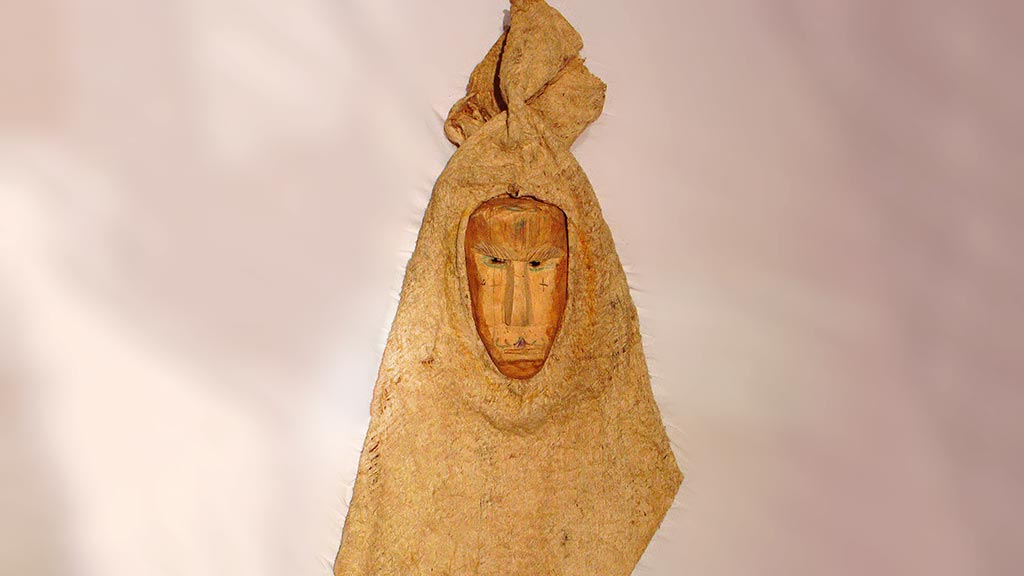 Peleacon Bark Cloth Mask The face is made of balsa wood. The barkcloth is of hoja menuda and sewn with untwisted chambira fiber. 2000.01.0968
Peleacon Bark Cloth Mask The face is made of balsa wood. The barkcloth is of hoja menuda and sewn with untwisted chambira fiber. 2000.01.0968
